The ASI585MC Pro is one of ZWO’s most affordable color cameras to start astrophotography. It includes the popular 8.3 MP Sony IMX585 camera sensor offering high dynamic range, low read noise, and absence of amp glow during long exposure photos, making it very much suited for deep-sky astrophotography. Moreover, because of its small pixel size (2.9 microns) and video speed of 47 FPS at maximum resolution, this camera can be used for some decent lunar and planetary imaging as well. The ZWO ASI 585MC Pro is an affordable way to get a dedicated astrophotography camera, without breaking the bank.
ZWO graciously provided their latest budget-friendly ASI585MC Pro color camera for review. Intrigued by the opportunity, I agreed on the condition of conducting an independent evaluation. It’s important to note that I maintain independence and honesty in my astrophotography reviews, as I didn’t accept nor receive any payment for this review.
The ZWO ASI585MC Pro is available at Agena Astro (USA/WW), High Point Scientific (USA/WW), and Astroshop (EU/WW).
ASI585MC Pro camera specifications
At the time of writing, the ZWO ASI585MC Pro is priced at approximately $599. This investment grants you a color camera equipped with a Peltier cooler capable of cooling down to -35 degrees Celsius below ambient temperature, which greatly reduces noise in your long exposure astro-pictures. Besides the fast USB 3.0 output for camera connectivity, two additional USB 2.0 outputs are available to connect additional devices such as your filter wheel. Its Sony IMX585 8.3 MP sensor has a pixel size of 2.9 microns, a Full Well capacity of 40,000 electrons, a (max.) quantum efficiency of 91%, and a video speed of 47 FPS at full resolution. This video speed is fast enough to capture solar system objects like the moon and planets in high quality videos.
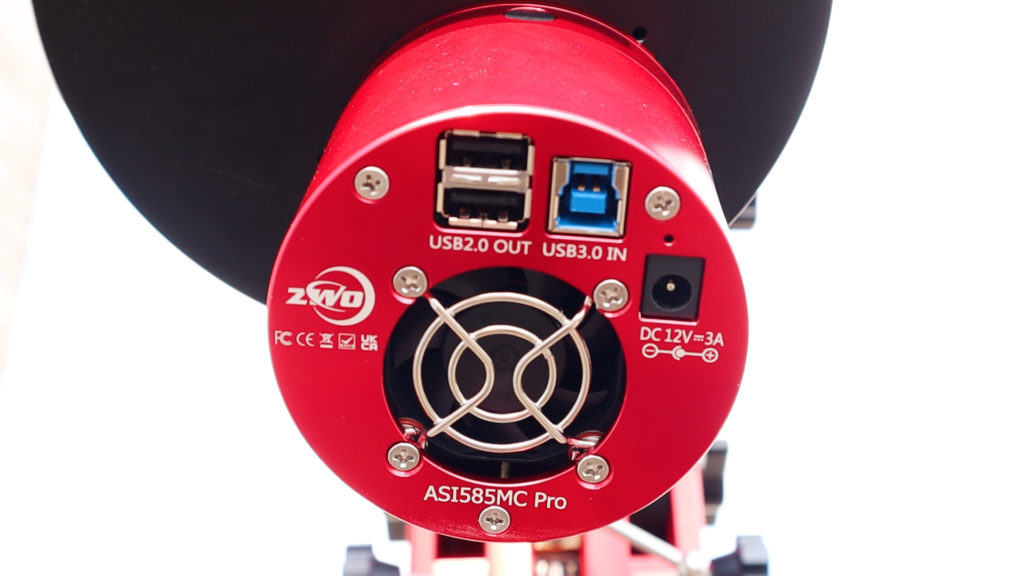



Dark Frames Testing
One of the first things I did is to make stacks of 15 dark frames cooled at -15C, and I was happy to see that the camera didn’t produce any significant amp glow from 60 seconds all the way up to 5 minutes. Below, you’ll find the stretched stacked pictures of the various stacks I produced. In the past, CMOS cameras tended to produce amp glow which can be challenging to calibrate out of your astro-pictures. However, since Sony introduced their STARVIS 2 sensors with back-illuminated pixel technology, this issue appears to belong to the past.




Galaxy Season
In March 2024, I had the opportunity to put the camera to the test. With the coldest months now behind us, March marks the onset of the renowned Galaxy season in the Northern Hemisphere. This period, occurring during spring, provides dedicated astrophotographers in the northern regions with clear and unhindered views of galaxies situated high in the midnight sky. Constellations such as Ursa Major, Leo, and Virgo offer splendid opportunities for observation, with relatively long nights still at our disposal to marvel at galaxies millions of light-years away. Motivated by this celestial spectacle, I embarked on an endeavor to capture some of these awe-inspiring galaxies using the ASI585MC Pro camera.
Astrophotography setup used with the ZWO ASI585MC Pro Camera
Typically, you’d find me equipped with my long focal length Edge HD 8″ telescope and sturdy mount for capturing these distant galaxies, and indeed, I’ll continue to utilize them. However, in this review, I put my ‘grab and go’ setup to the test—or perhaps a more fitting moniker would be ‘grab and groan’, as the total weight of the setup used is about 10 kg (22 lbs).
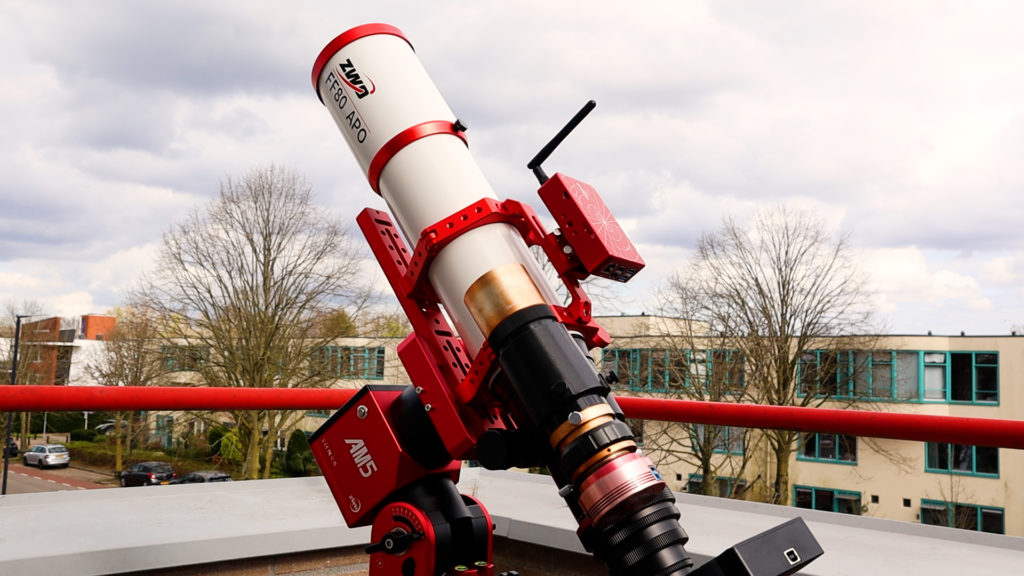

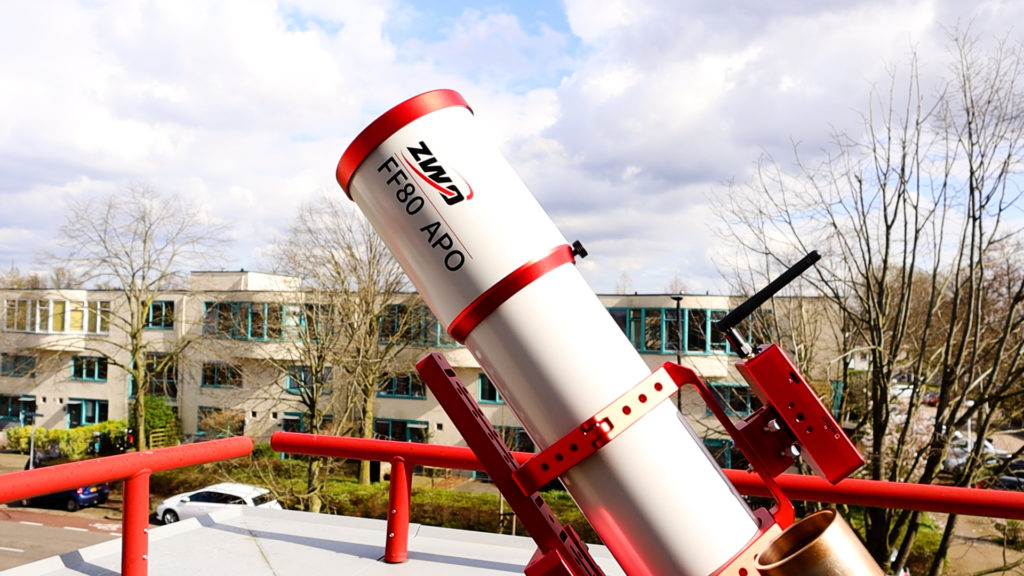
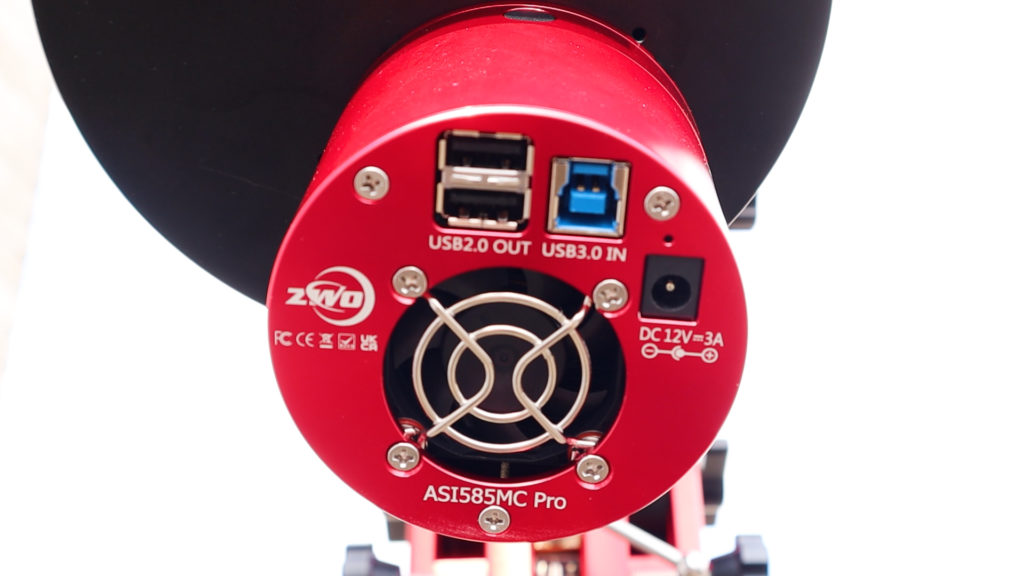
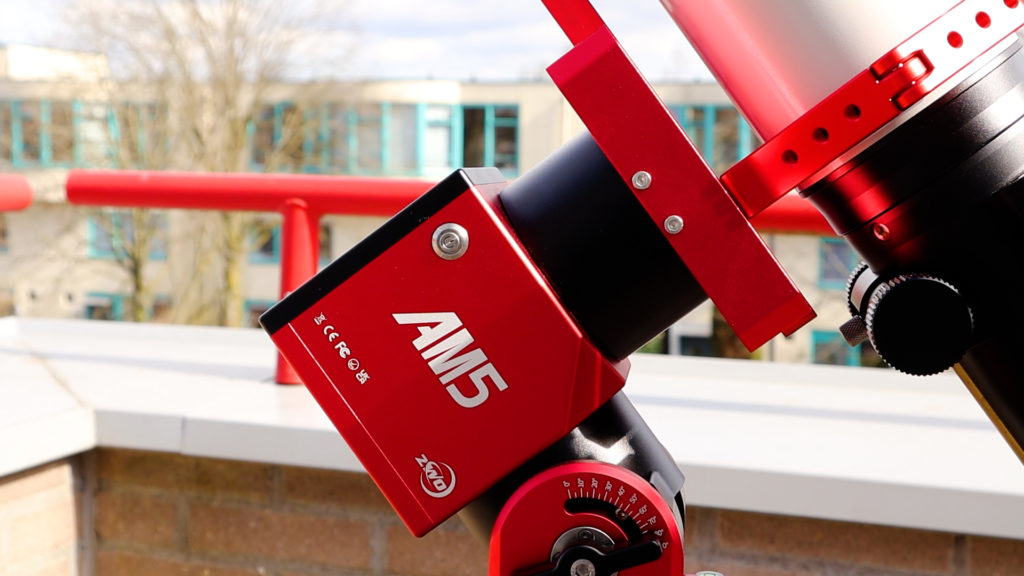
My setup consisted of a ZWO AM5 harmonic drive mount paired with a 600mm focal length ZWO FF80 telescope, a filter wheel, and the ASI585MC Pro camera. This configuration achieves approximately 1 arcsecond per pixel, surpassing the average astronomical seeing conditions typically experienced here in the Netherlands. I used my ZWO AM5 harmonic drive mount to track objects in the night sky. Powering this setup is a Ctechi GT200 portable power station, while control of all astrophotography gear is managed through my ASIAIR Plus. Admittedly, I acknowledge that the ASIAIR is limited to ZWO cameras. Nevertheless, I must commend it as one of the most affordable and user-friendly devices I’ve ever purchased for capturing the wonders of the night sky without needing a laptop or PC.
Capturing Galaxies with the ZWO ASI585MC Pro and ASIAIR Plus
The ZWO ASI585MC Pro camera was seamlessly recognized by the ASIAIR Plus. I focused the camera without issue, polar aligned the mount, and cooled the camera to -15C. After this was done, I pointed my telescope at M81 and M82 – known as Bode’s galaxies, after Johann Elert Bode who first discovered them in 1774 but misidentified them as nebulae. Both galaxies are about 12 million lightyears away from Earth and can be found in the constellation Ursa Major. I focused again on the stars, started autoguiding and took 180 second pictures without using any astrofilter. After about three hours, I switched to a 7nm Ha narrowband filter to capture the emission nebulae (in red) within both galaxies, capturing another 2 hours of data at 5 minute exposures.
As luck would have it, we were treated to a couple of clear nights. So I used a similar method and total exposure time as describe above to capture Messier 101, known to astrophotographers as the pinwheel galaxy (21 million lightyears away), the whirlpool galaxy (M51; 31 million lightyears), and an almost edge-on galaxy known as NGC 4216 in the constellation Virgo (55 million lightyears) which happened to have a new supernova designated as SN2024gy, first discovered this year in early 2024.
Some disclaimers
I was a bit impatient this time around, as my usual approach involves dedicating more time to capturing the vibrant colors of each galaxy. With a color camera, I typically recommend spending upwards of 9 or 10 hours per galaxy, especially when imaging under heavily light-polluted skies like those I encountered (Bortle class 7) from my balcony in the city. However, for the purposes of this test, I opted to photograph a variety of objects to provide a comprehensive understanding of what to expect when using the ASI585MC Pro.
Subsequently, I processed the images using Pixinsight, tackling the issue of light pollution with GraXpert. Additionally, I utilized renowned tools such as the Blur and Noise Exterminator to enhance picture sharpness and reduce noise, among other adjustments. Overall, I was pleasantly surprised to observe that the ZWO ASI585MC Pro yielded notably decent images, particularly considering the aforementioned challenges.


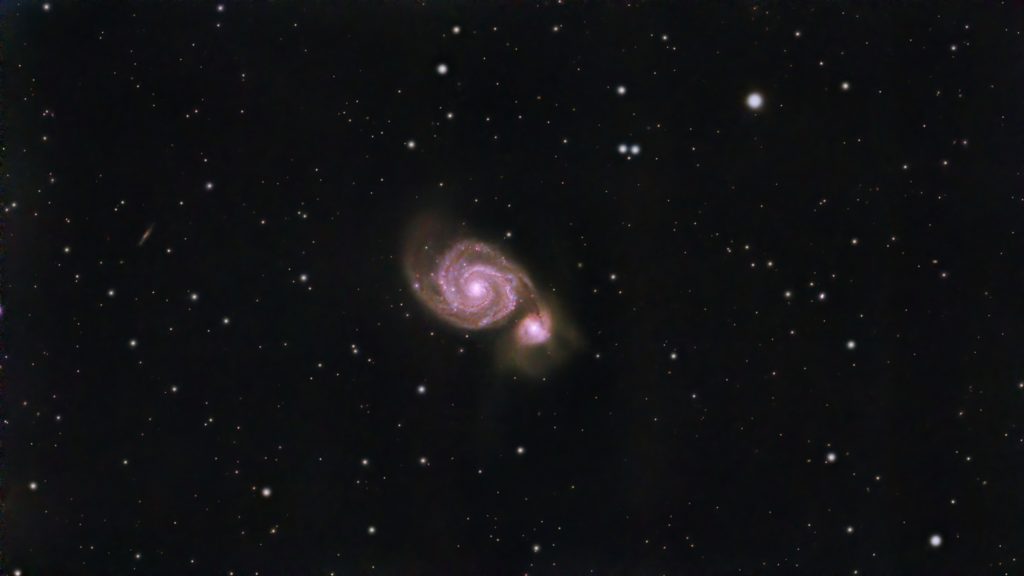
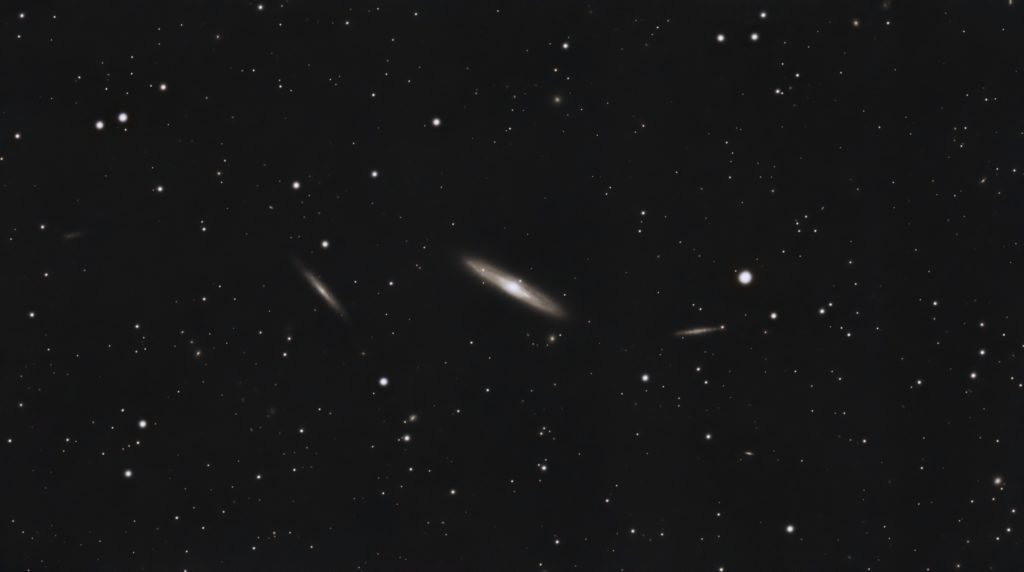
In mid-March 2024, I also captured the half moon by taking 1:30 minute videos, and processing them in autostakkert and wavesharp 1.0 beta.
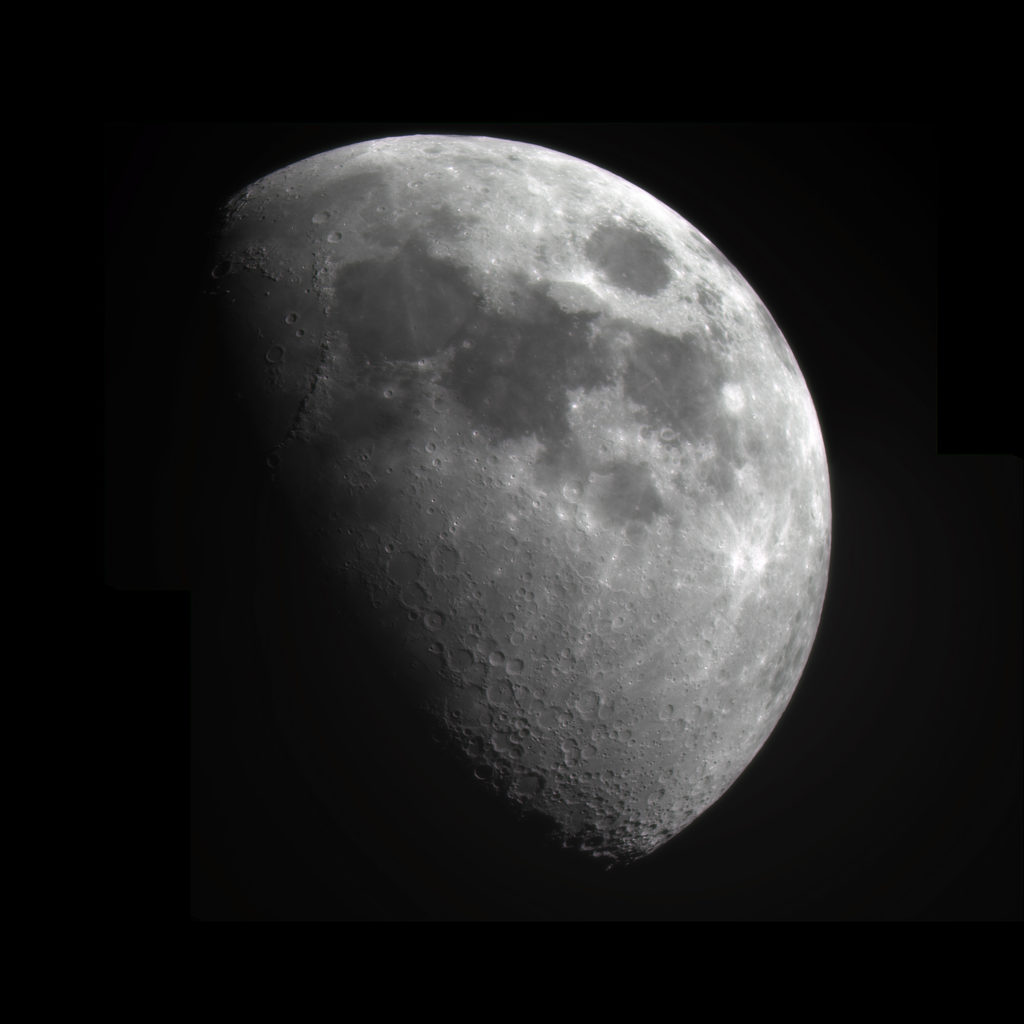
ZWO ASI585MC Pro – Final Verdict
I truly value it when astrophotography companies, such as ZWO, lower the cost of cooled-astrophotography cameras like the ZWO ASI585MC Pro. This initiative significantly enhances the affordability of astrophotography while delivering commendable image results. Although the camera sensor may not be as sizable as those found in its larger counterparts, it undeniably demonstrates the capability for respectable deep-sky and solar system imaging. It serves as an excellent entry point for those interested in commencing their astrophotography journey, offering versatility in capturing both solar system and deep-sky objects with a single camera. For anyone seeking a budget-friendly means to delve into dedicated astrophotography without breaking the bank, I highly recommend this option.